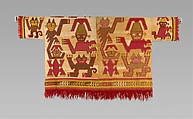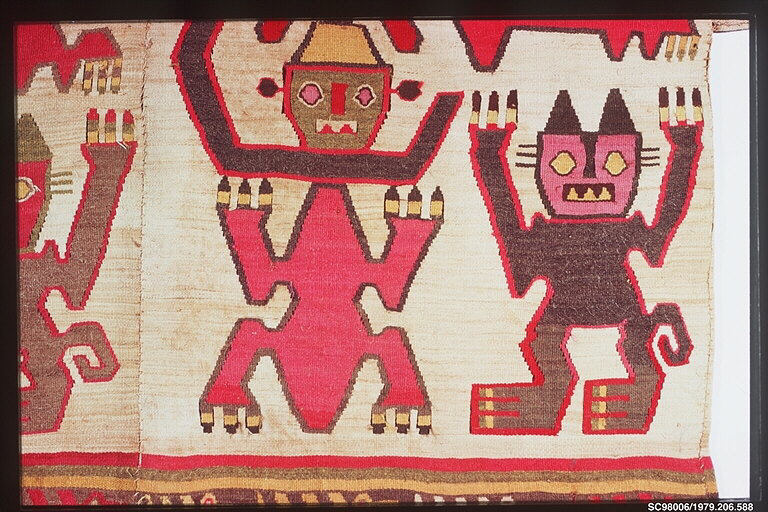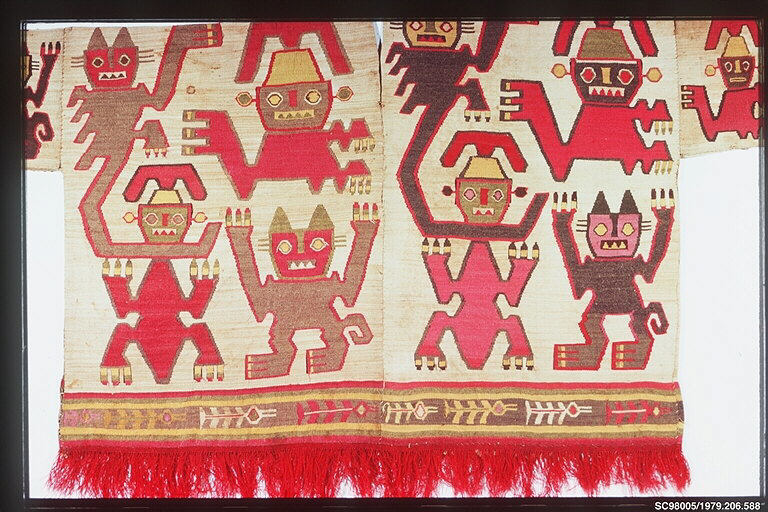Shirt
Not on view
The production of cloth was highly developed in ancient Peru. Textile garments conveyed important social, political, and religious messages depending on the materials and the imagery elaborating them. Andean weavers were full-time specialists. They worked in a wide range of techniques, including twining, knotting, plaiting, and weaving. This shirt is woven in tapestry weave, a technique in which the wefts are so tightly packed that they completely cover the warps. Tapestry was considered a high-prestige cloth in ancient Peru as elsewhere in the world.
The sleeved shirt features eight boldly rendered figures on each face of the tunic. One figure each appears on the front and back of the sleeves. All have wide open, staring eyes and toothy mouths. Some figures appear catlike, with pointed ears and tails, while the others seem more human, wearing crescent-shaped headdresses. The unusually long tail of one "cat" seems to wrap around the neck of the seated figure below it. The abstraction of the figures and their alternating shades of red and brown on natural off-white account for the striking visual impact of the design.
Due to rights restrictions, this image cannot be enlarged, viewed at full screen, or downloaded.
This artwork is meant to be viewed from right to left. Scroll left to view more.





